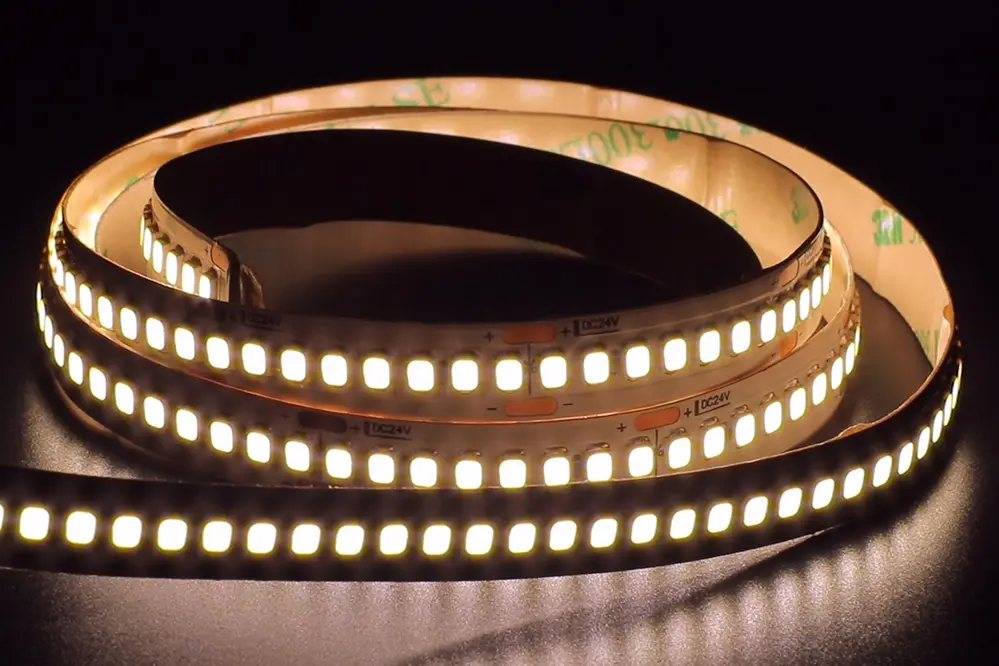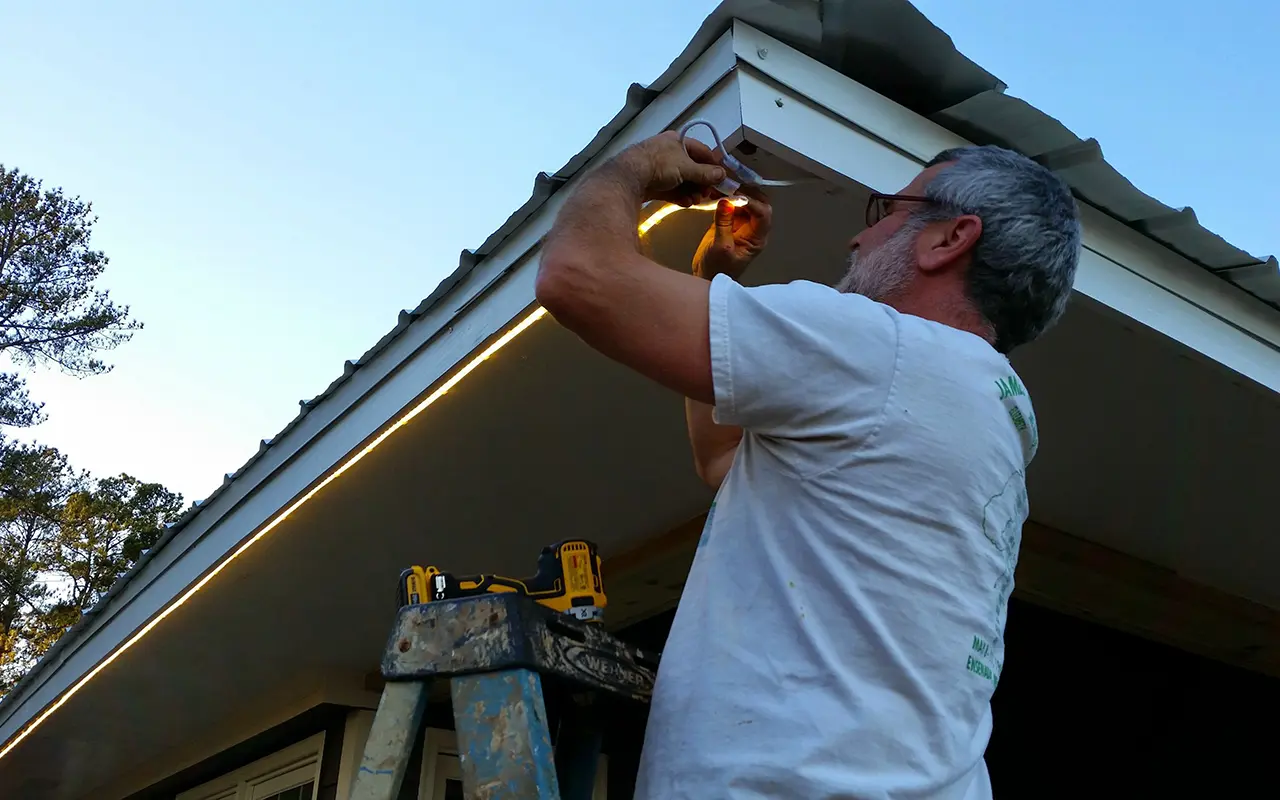When it comes to enhancing your space with vibrant, energy-efficient lighting, LED strip lights with a good warranty are a top choice for both enthusiasts and professionals. However, sourcing the right LED strip lights can be a daunting task, especially with the myriad of control options available in the market. Many buyers, whether novices or seasoned experts, often fall into common pitfalls that can lead to subpar lighting solutions. In this blog post, we will explore the most frequent mistakes made when sourcing LED strip lights and how to avoid them.
Understanding these common mistakes is crucial for anyone looking to achieve the perfect lighting setup. From selecting the wrong color temperature to overlooking the importance of quality power supplies, these errors can significantly impact the performance and longevity of your LED strip lights. By being aware of these pitfalls, you can make informed decisions that ensure your lighting project is both successful and sustainable.
My name is Tom, and I’ve been immersed in the LED lighting industry since 2005. With nearly two decades of experience, I’ve witnessed the evolution of LED technology and have gained extensive knowledge, particularly in LED strip lights. This blog post is a culmination of my years of hands-on experience and industry insights, aimed at helping you navigate the complexities of sourcing LED strip lights effectively.
So, if you’re ready to illuminate your space with confidence and avoid the common mistakes that many fall prey to, let’s dive right in!
Quality Over Price

Prioritizing low price over quality can result in subpar performance, reduced longevity, and higher maintenance costs. When selecting LED strip lights, it is essential to focus on high-quality products from reputable brands, ensuring consistent performance, superior build quality, and better energy efficiency. Quality lights may have a higher initial cost, but they offer substantial long-term benefits.
Assessing Build Materials
When sourcing LED strip lights, scrutinize the build materials meticulously. A high-quality build translates to better durability, efficiency, and performance.
Focus on the materials used in the LED chips, PCB, and protective coatings. Poor-grade components can lead to premature failure, diminished light output, and potential safety hazards.
High-quality copper PCBs offer superior heat dissipation and electrical conductivity.
Look for features such as double-layer PCBs, which provide enhanced thermal management and stability. Additionally, ensure the protective silicone or epoxy coating is UV resistant to prevent yellowing and brittleness over time. Attention to materials will ensure optimal light quality and longevity.
Checking Certifications
When sourcing LED strip lighting, ensuring they have proper certifications is crucial for safety, performance, and legal compliance.
- UL (Underwriters Laboratories): Recognized for safety standards in electrical products.
- CE (Conformité Européenne): Indicates compliance with European safety, health, and environmental requirements.
- RoHS (Restriction of Hazardous Substances): Ensures the product is free from specific hazardous materials.
- ETL (Electrical Testing Laboratories): Similar to UL, signifies compliance with North American safety standards.
Certifications provide assurance that LED products have been tested under rigorous conditions. This ensures reliability and safety.
Lack of certification can lead to hazards such as electrical faults or non-compliance with regulations.
Incorporating certified products can significantly boost customer trust and long-term satisfaction.
Vendor Reliability
Assessing a vendor’s reliability is paramount when sourcing LED strip lights. Choose vendors with proven track records, positive reviews, and established supply chains to ensure product consistency.
Partnering with unreliable vendors can result in subpar products, delays, and increased costs. Always verify the vendor’s reputation and request references or case studies. This diligence helps mitigate risks and ensures you receive high-quality LED strip lights that meet your specifications.
Research Vendor History
When sourcing LED strip lights, evaluating the history of your vendors is critical. But how do you discern a reliable vendor from an unproven one?
Since 2016, several scrupulous vendors, alongside numerous counterfeiters, have flooded the market. Investigating a vendor’s history can prevent potential pitfalls and ensure you’re investing in legitimate, quality products. Scrutiny of the vendor’s track record, longevity, and past customer experiences is essential.
Furthermore, it’s vital to delve into a vendor’s historical performance and market presence. Businesses with longer tenures typically suggest stability and reliability. Examination of customer testimonials, review platforms, and possibly even industry-specific forums can yield significant insights into a vendor’s credibility.
Additionally, seek out any previous audits, legal issues, or customer disputes the vendor may have encountered. Vendors marred by frequent complaints or legal difficulties often indicate underlying issues in product integrity, customer service, or compliance. These potential red flags can save significant hassle down the line.
In essence, diligently researching a vendor’s history mitigates risk, assures quality, and ensures a fruitful long-term partnership. This effort cannot be overstated in its importance for securing high-standard LED strip lights.
Reading Reviews
When sourcing LED strip lights, careful examination of reviews can provide invaluable insights and prevent costly errors.
- Identify Reputable Sources: Prioritize reviews from authoritative platforms such as Amazon, Home Depot, or specialized lighting forums.
- Evaluate Review Patterns: Consistent issues highlighted in multiple reviews often signify genuine problems with the product.
- Consider Expert Opinions: Pay attention to reviews from industry professionals who can offer in-depth technical assessments.
- Analyze Recency of Reviews: Recent reviews reflect the current quality and performance of the LED strip lights.
- Assess Reviewer Credibility: Cross-check reviewer profiles for authentic feedback and potential biases, ensuring balanced viewpoints.
Leveraging reviews from trusted sources can significantly enhance your decision-making process and lead to more informed purchases.
In addition to professional evaluations, user-generated feedback often reveals practical, real-world experiences with the product.
Technical Specifications
When sourcing LED strip lights, a thorough understanding of technical specifications is paramount. Key parameters such as lumens per meter, color temperature, CRI (Color Rendering Index), and power consumption must be carefully evaluated. Overlooking these aspects can lead to suboptimal lighting performance, mismatched aesthetic outcomes, or even potential electrical issues. Therefore, ensure that the LED strip lights you consider meet the necessary specifications for your project, both in terms of visual quality and energy efficiency.
Matching Voltage Requirements
Ensuring your LED strip lights match the voltage requirements of your power supply is critical for optimal performance and safety.
- Identify Voltage Rating: Verify the voltage rating specified for the LED strip, commonly 12V or 24V.
- Check Power Supply Compatibility: Ensure that the power supply’s output voltage matches the LED strip’s voltage requirement.
- Avoid Overloading: Ensure the total wattage of the LED strips does not exceed the power supply’s capacity.
- Consider Voltage Drop: For longer runs, factor in voltage drop which can affect performance at the far end of the strip.
Failure to match voltage requirements can result in inadequate illumination, reduced strip lifespan, or complete system failure.
Always verify the voltage compatibility between components to avoid costly and potentially hazardous mistakes.
Detailed planning and adherence to voltage specifications ensure a robust and efficient lighting installation.
Lumens and Color Temperature
When sourcing LED strip lights, evaluating lumens and color temperature is crucial to achieving your desired lighting effect. Misjudging these parameters can severely impact lighting quality and ambiance.
Lumens quantify the total visible light output from a source, helping gauge the brightness level of the LED strip.
Selecting appropriate lumens depends on the intended application, whether task, ambient, or accent lighting.
Conversely, color temperature affects the perceived warmth or coolness of the light, measured in Kelvins (K).
Understanding both lumens and color temperature enables tailoring lighting solutions to specific environments, enhancing functionality and aesthetic appeal.
Incorrectly assessing these aspects may lead to inconsistent color rendering and insufficient illumination for the intended space. By meticulously aligning lumens and color temperature with application requirements, you ensure an optimal lighting experience.
Installation Considerations

Proper installation of LED strip lights is essential to avoid performance issues. Attention to surface preparation, positioning, and the type of adhesive backing is paramount for a long-lasting setup.
When planning, think carefully about the placement relative to power sources and proximity to other components (e.g., controllers or dimmers) to minimize voltage drop and ensure uniform brightness throughout the strip.
Avoid flexible versus rigid configuration misconceptions to ensure the ‘LED strip’ fits and performs as intended.
Compatibility with Fixtures
Sourcing LED strip lights requires careful consideration of fixture compatibility. Failing to do so can result in installation and performance issues.
Verify that the LED strip dimensions match those of the fixture. Deviations can hinder installation success.
Consider the voltage requirements of both the LED strip and the fixture. Voltage mismatches can cause malfunctions.
Ensure the fixture’s thermal management capabilities align with the LED strip. Overheating can degrade performance.
Factor in the control compatibility between LEDs and fixtures. Incompatible controls can lead to issues such as flickering.
Ultimately, successful integration relies on comprehensively assessing fixture compatibility. Evaluate all factors to guarantee optimal results.
Understanding Wiring Needs
Proper wiring is crucial for the efficient functioning of LED strip lighting. Without the correct wiring, power distribution can suffer, leading to inconsistent illumination and potential safety risks.
Every installation’s wiring needs vary significantly depending on the specific project specifications.
You must determine the appropriate gauge of wires for your installation to avoid issues like voltage drop, which can affect the overall performance and lifespan of your LED strip lights.
To achieve a successful wiring setup, it’s essential first to outline the power requirements and layout your connection plan meticulously. This includes calculating the total wattage, ensuring adequate power supply, and verifying the compatibility of connectors and accessories. Investing time in this planning phase can prevent unnecessary complications during the installation process.
Conclusion
Sourcing LED strip lights requires careful consideration of quality standards and wiring needs. Prioritize reviews and certifications to avoid quality issues. Understanding product specifications is crucial to avoid mismatched components, saving time and expense. Effective planning and proper installation ensure optimal performance and longevity. Ultimately, diligent preparation is key to success in any lighting project.
For those seeking a reliable supplier, consider contacting Unitop, a professional Chinese manufacturer of LED strip lights and LED neon strips. With their expertise and high-quality products, Unitop can help you achieve the perfect lighting solution for your needs.





